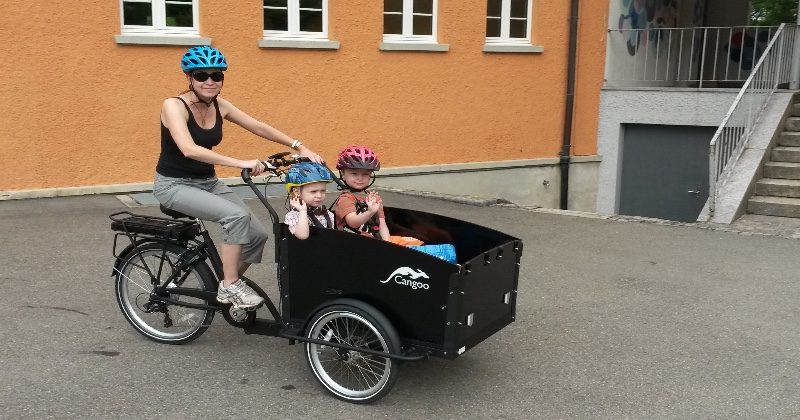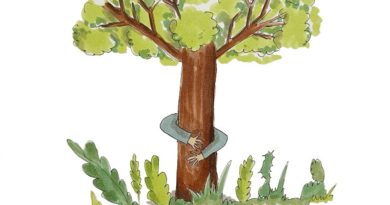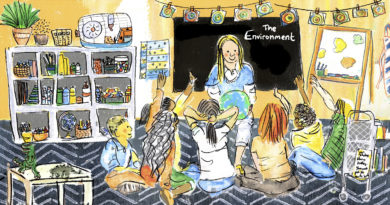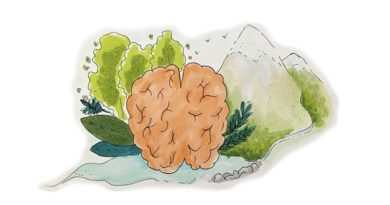The Family Climate: Adapting and Mitigating
Our planet’s climate is changing and no amount of Trump twittering can alter that fact. The questions are: how much will it change, and how far are we prepared to go to divert the current course we’re on?
I am a mum with a master’s degree in environmental science and politics, and you can imagine that the topic of climate change gets more than the average amount of attention in our household. Our children are currently seven and four, and this means that I’ve been walking a mummy dilemma for about seven years now: How much should kids worry about climate change? I certainly think it’s important that we lead by example and teach our kids good habits, and furthermore instil the concepts of “need, not want” and of “reduce, reuse, recycle” (in exactly that order, with “reduce” first and “recycle” last, which is often forgotten).
However, given the stress levels in our house when son #1 screams (really – I’m not exaggerating – screams!) at son #2 because he perceives his little brother to have kept the tap on for hand-washing two seconds longer than he thinks is OK, I worry about how much stress they are taking on. I also want children to have the room to be children – to play, to learn, to grow; and if they cry themselves to sleep at night, it’s because they’ve had fight with their best friend, not because they saw in a book that it’s “two minutes to midnight” and they think the world won’t be here tomorrow morning. I wish I had a pearl of wisdom to offer. The best I can manage at the moment is to make sure that we explain as much as we can, remind them that the best any of us can do is our best, and lead by example.
How is our family adapting to climate change? This question made me realise, again, just how blessed we are in Switzerland. We don’t have to adapt to rising sea levels. We can take steps to adapt to warmer summers: we plant drought-tolerant, yet still winter-hardy, plants, and sometimes we sleep in the cellar. We’re adapting to warmer winters by making sure to book our family ski holidays in places that are high enough for snow (in time, maybe that won’t be enough). Our family doesn’t live close enough to lakes, rivers, or hillsides that are vulnerable to flooding or mudslides. But while some may see the options for adaptation as necessary practicalities, in our particular situation, considering adaptation came to seem fatalistic and left me feeling rather depressed. It has crystallised for me that our family is definitely more about mitigation than adaptation.
So here are some of the actions we’re taking to mitigate climate change. I’ve tried to pick some of the less typical things, and if you’re already doing them – pats on the back all round.
Reduce. I’ve put myself on a clothes buying moratorium this year. When I do buy new I’ve become a big fan of Zalando: so easy – what a gift for busy parents! But Zalando is clever, following your buying habits, storing your wish list – they know exactly when to hit you with a notification that something from your favourite brand is on sale, and so on. I’d noticed that their tactics were working and the amount of Zalando orders was creeping up and up… So this year, I’m not buying any new clothes (from anywhere) and have uninstalled the Zalando app. My credit card already looks happier. Note to self: must extend moratorium to my shoes next year.
We’ve been moving into the sharing economy as well, sharing ladders, drills, fondue sets, even Wi-Fi connections, etc. with our neighbours, instead of each household buying its own. Have a look at www.pumpipumpe.ch or www.sharely.ch.
Reuse. With the exception of shoes, the majority of my own clothes are bought second-hand from charity shops or from eBay. I was recently in the Caritas shop in Aarau, near the train station, and it really should be called a boutique, not a shop. Don’t forget that your good-quality used things can also be “reused” (i.e., dropped off) there, too. Second-hand clothes are also the norm for my boys, although you’ll never find second-hand boys’ trousers over the age of three – the knees can’t stand the pace. By the way, I use a pair of my husband’s old jeans to patch the knees of my boys’ trousers pre-emptively, before the holes appear, so the trousers last longer.
We also buy second-hand toys. My boys love a rummage at the local kids’ Börse, haggling to extend their 10-franc budget. Son #1 saved up SFr. 100 for a Hot Wheels track last year, and then I showed him Ricardo. He was thrilled to get the same track for SFr. 37, and I paid the postage as a reward for understanding and accepting second-hand. Facebook marketplace seems to be taking off in Switzerland as well, and possibly suits expats better.
I’ve swapped disposable cotton wool cleansing pads for reusable, washable fleece pads (except for removing nail polish). You can make your own with some pinking shears and an old fleece, or you can buy them on eBay. And my boys couldn’t be prouder of the bamboo straws we have at home. Saving money and resources – double bubble!
Now to one of my pet peeves: please don’t wash or rinse your dishes before you put them into the dishwasher. Dishwashers and detergents are designed for cleaning dirty stuff, and the whole system works better when the detergent has something to get its teeth into. After all, you don’t rinse all your clothes before putting them into the washing machine, do you?
Recycle. I’m not sure, but I think we do quite well here, as a family. I would be interested in knowing how we compare with others. By the time we have recycled (including plastic, try www.sammelsack.ch or www.kunststoffsammelsack.ch) and composted anything that can’t be reused, the rubbish we put out totals one 17-litre bag per fortnight, so about 8.5 litres of rubbish per week. Often the bag isn’t really full either, but it starts to smell, so out it must go. We could do better at capturing recycling from rooms other than the kitchen, for example the cardboard box that toothpaste comes in.
We have a hybrid car for when we’re not walking, biking or using public transport, and we offset our flying emissions and are trying to fly less, as well. This year we returned from Scotland to London using the overnight sleeper train. Though given that we started the journey by diesel engine, before swapping to electric and then swapping back to diesel, it’s hard to say just how much more environmentally friendly this was compared to flying, although the train seemed full, which was good. On the other hand, there’s only one train a day which leaves (from Edinburgh) at 23:30, meaning a long day with tired children, who were late to bed and then had to be woken after about seven hours, when we arrived at London. So we tried to do the eco thing, but it took considerable effort. Maybe, though, that’s the only way we can mitigate climate change – we will have to make even bigger sacrifices. And I guess that brings me back to where we started: the best any of us can do is our best, and lead by example. Family lives are full and crazy. Watch for opportunities for improvement, so we can leave our children a planet that’s in better condition than when we received it. But be kind to yourselves – I’m sure you’re doing your best.
By Michelle Kiener
Michelle is a gourmet chef, freelance writer and managing editor. A UK expat, she lives in Baden with her Swiss husband and their two boys in their “fixer-upper” house. She enjoys skiing, triathlons, gardening, dancing and crafts. Then she became a mum and is proud to fit in a daily run for the bus, a weekly ballet class, and keeping the grass short enough to let people in and out of the house. michelle@chefinity.com
Photo by Michael Vogel




